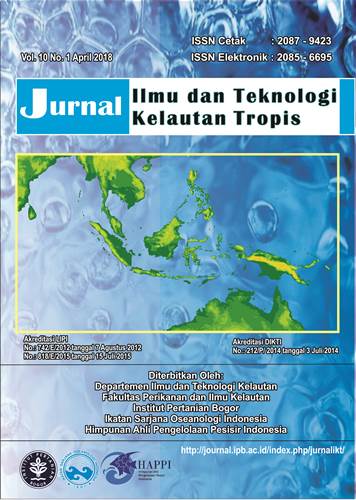STRATEGI PENGELOLAAN LIMBAH DI PELABUHAN ARAR KABUPATEN SORONG YANG BERKELANJUTAN
Abstract
Pelabuhan Arar merupakan pelabuhan yang sedang berkembang dan terletak di kawasan ekonomi khusus, sehingga menghasilkan limbah dan sampah yang semakin banyak. Penelitian ini bertujuan untuk memformulasi strategi pengelolaan limbah di Pelabuhan Arar Kabupaten Sorong yang berkelanjutan. Pada penelitian ini dilakukan wawancara terhadap lima pakar ahli yang dipilih secara purposive dengan bantuan kuesioner khusus untuk keperluan analisis AHP. Data yang diperoleh dianalisis dengan analytical hierarchy process (AHP) menggunakan perangkat lunak expert choice 2000. Hasil penelitian memperlihatkan bahwa ada tiga strategi utama yang perlu dilakukan agar pengelolaan limbah di Pelabuhan Arar Kabupaten Sorong menjadi berkelanjutan, yakni membuat pengolahan limbah dan sampah menjadi satu kebiasaan dan budaya keseharian (habituasi) dari masyarakat, mencari dan menerapkan teknologi zerowaste serta melakukan penegakan hukum.
Authors
This work is licensed under a Creative Commons Attribution 4.0 International License.
Jurnal Ilmu dan Teknologi Kelautan Tropis i is an open-access journal, meaning that all content is freely available without charge to the user or their institution. Users are allowed to read, download, copy, distribute, print, search, or link to the full texts of the articles in this journal without needing to request prior permission from the publisher or the author.
All articles published by Jurnal Ilmu dan Teknologi Kelautan Tropis are licensed under the Creative Commons Attribution 4.0 International License. This allows for unrestricted use, distribution, and reproduction in any medium, provided proper credit is given to the original authors.
Authors submitting manuscripts should understand and agree that the copyright of published manuscripts is retained by the authors. Copyright encompasses the exclusive rights of authors to reproduce, distribute, and sell any part of the journal articles in all forms and media. Reproduction of any part of this journal, its storage in databases, and its transmission by any form or media is allowed without written permission from Jurnal Ilmu dan Teknologi Kelautan Tropis.


